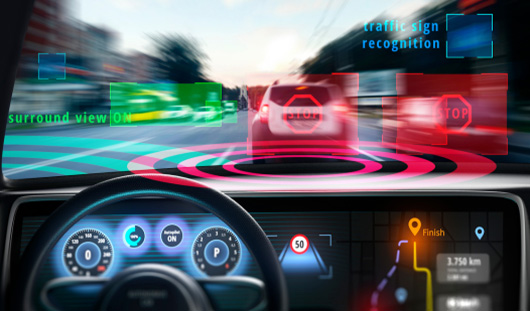
Innovations in the auto industry are nothing new, but the latest technology has helped make vehicles safer, more efficient and more enjoyable. Nowhere is the newest technology more impactful or evolving faster than Advanced Driver Assistance Systems (ADAS). At its core, ADAS helps drivers by alerting them to potential dangers, enabling them to respond safely and more quickly. These systems rely on various sensors, cameras, and modern technology to detect obstacles, driver errors, and much more to revolutionize safe driving.
While the key focus of an ADAS is safety, the advantages of advanced driver assistance systems go beyond a safer driving experience. To understand the full range of ADAS benefits, and prevent unintended consequences from routine service, it’s essential to know what the technology entails, how it works, and the implications for drivers and repair technicians.
What is ADAS all About?
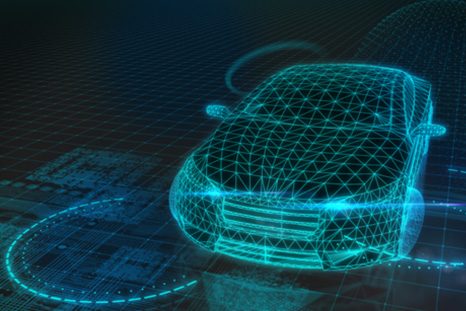
ADAS is actually composed of multiple systems. Because the advantages of ADAS extend beyond safe driving, sensors and other components are interconnected. Systems that impact fuel efficiency, driver comfort, and safety often share components. Each system relies on the latest OEM repair information and advanced technology for accurate calibration and optimal operating performance.
Image Processing Cameras
ADAS cameras capture images of obstacles, pedestrians, other vehicles, and even drivers. The system processes the images and appropriate alerts, while other actions are engaged. Many cars feature cameras that monitor the rear, side, and front of the vehicle and an interior camera to detect driver issues or safety hazards such as drowsiness behind the wheel.
Radar
While radar isn’t new technology, it has found innovative and practical uses for vehicle safety. ADAS sensors use radar to emit radio waves that bounce off objects, and the appropriate system processes the resulting data. Radar-based ADAS components are ideal for monitoring and analyzing the location and distance of an obstacle.
LiDAR
Think of LiDAR (light detection and ranging) as radar 2.0 — this technology is considered more accurate and precise for detecting objects from pedestrians to other vehicles. Like radar, LiDAR measures the position and distance of obstacles but uses laser beams instead of radio waves. The resulting data includes high-resolution images and 3D technology that are more detailed and in-depth than cameras or radar.
Ultrasound
Like radar, ultrasound isn’t new technology. However, ultrasonic sensors’ role in today’s ADAS is well-established and familiar. The technology relies on high-frequency sound waves to detect objects and pedestrians, and the system analyzes the resulting data. Typically located inside rear or front bumper covers, ultrasonic sensors are essential for self-parking and parking-assist systems.
While the advantages of advanced driver assistance systems for safety are well documented, the technology is still in its infancy. As LiDAR and other advanced technologies become more cost-effective, the innovations in ADAS will continue. The current technology used in ADAS is already finding its way into the self-driving auto realm and beyond, but its importance for driving safety is undeniable.
The Importance of Advanced Driver Assistance Systems
The National Highway Traffic Safety Administration (NHTSA) reports that over 35,000 people died in automotive crashes in 2015. With more than 7 percent increase in roadway fatalities, that year was the most significant increase in half a century. Not surprisingly, 94 percent of the accidents reported were caused by driver error. Of all the ADAS benefits, none are more significant than the potential to save lives.
In the chart below, IDTechEx identifies the adoption rates of ADAS key features including, cruise control, emergency braking, reverse camera, traffic alert, and lane assistance began skyrocketing from 2014 to today, as manufactures search for new ways to enhance the safety of drivers.
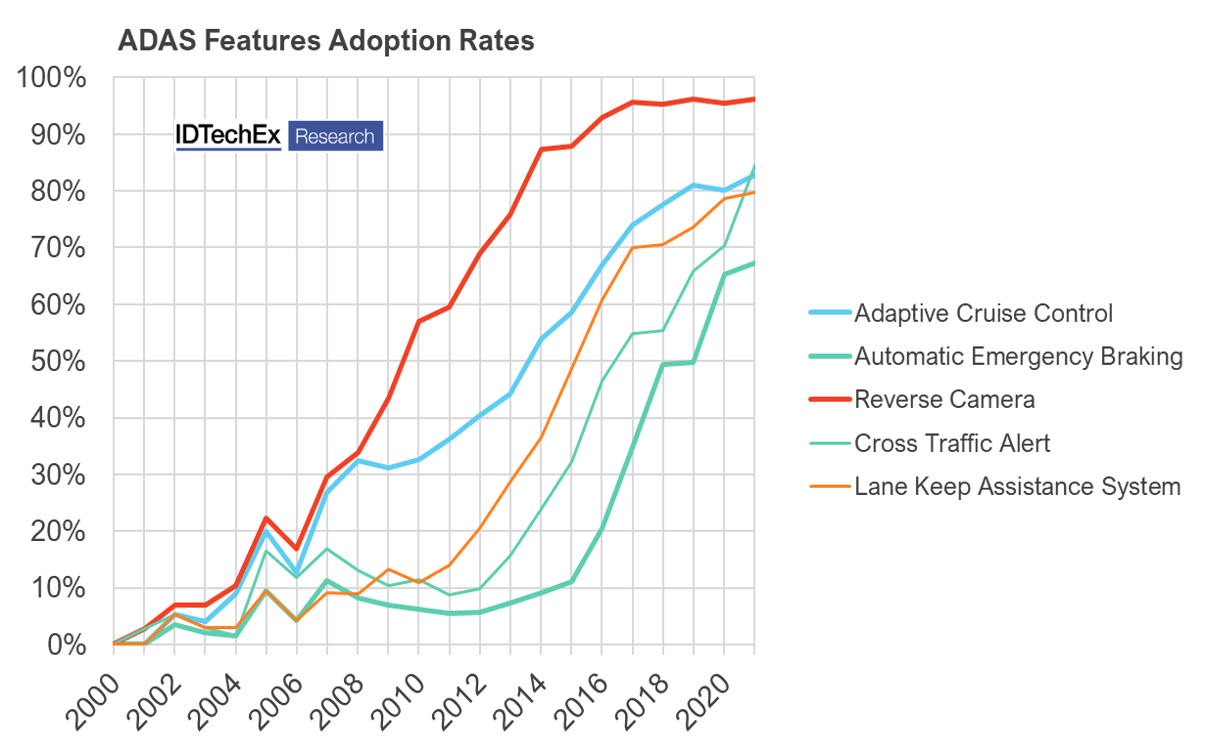
According to research by the National Safety Council, ADAS technology can potentially prevent nearly 21,000 accident-related deaths yearly — 62 percent of total traffic deaths. The study also reveals that ADAS can potentially reduce damage to more than 4 million vehicles involved in less than severe accidents. Forward collision prevention, lane assist, and automatic braking are the most impactful benefits of advanced driver assistance systems, but the list of contributing safety features is long.
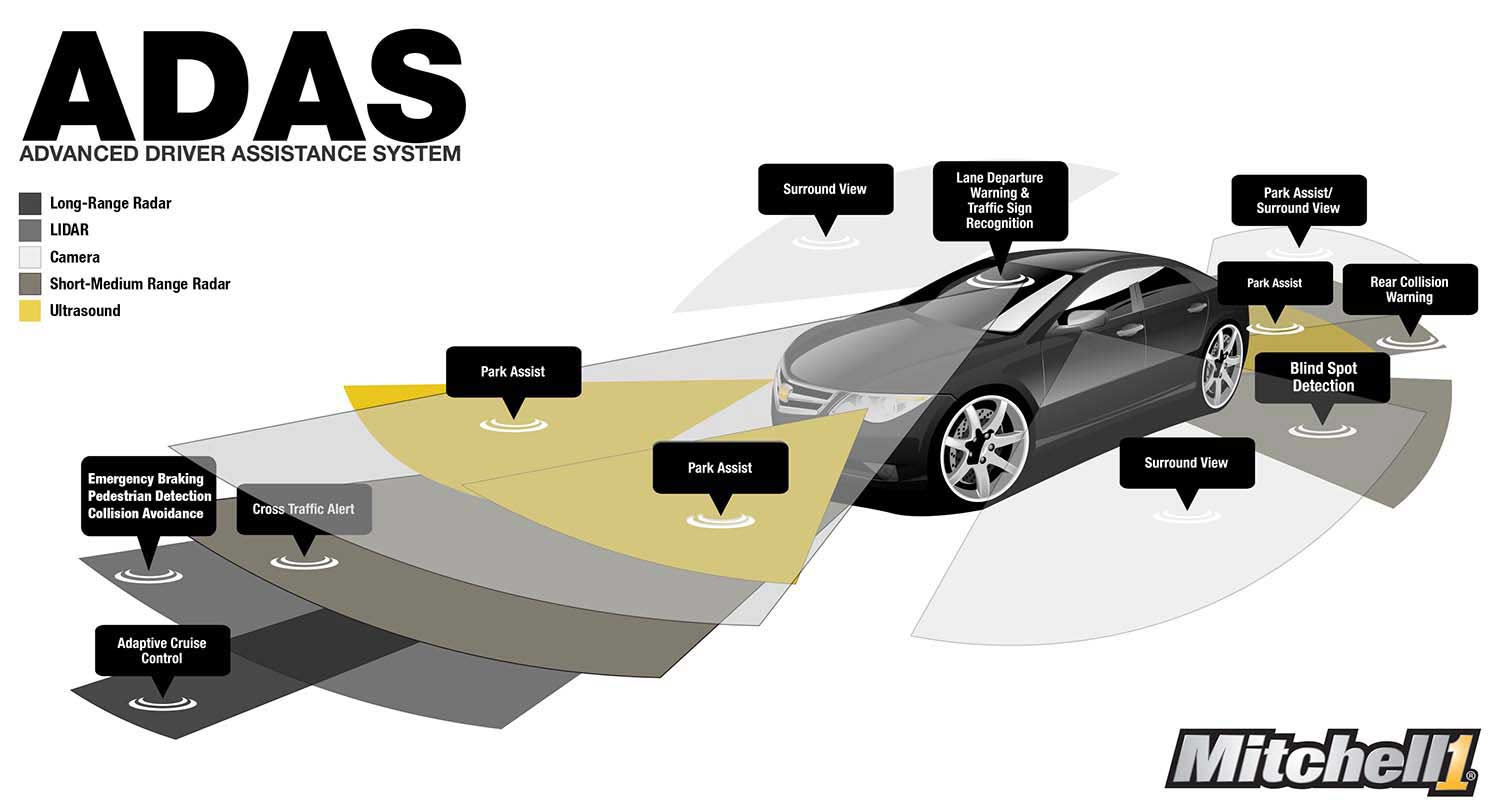
- Automatic emergency braking
- Forward collision warning
- Adaptive cruise control
- Traction control
- Lane departure warning
- Blind spot detection
- Traffic sign recognition
- Pedestrian detection
- Driver drowsiness detection
- Gaze detection
These ADAS features and the advancements yet to come have a single goal: to make driving safer and easier. As vehicle safety technology evolves, the advantages of advanced driver assistance systems will increase. From saving lives and reducing injuries to creating a better driver experience, ADAS is changing the auto industry for the better.
ADAS Benefits Go Beyond Safety
While the term ADAS has become synonymous with vehicle safety, the technology can do far more than protect drivers, property, and pedestrians. Other ADAS benefits include improved fuel economy, driver comfort, and navigation technology. While these features may not seem safety-related, they make driving less stressful and more convenient.

Improved Fuel Economy
When ADAS technology makes vehicles more fuel efficient, drivers save money, and the environment gets a breather. Adaptive cruise control is the perfect example of how ADAS makes driving more affordable and comfortable. This ADAS application automatically adjusts vehicle speed in response to traffic conditions, resulting in consistent and efficient traveling.

Driver Comfort and Convenience
Discomfort, inconveniently-placed controls, and digital devices are only a few reasons drivers take their eyes off the road. How can ADAS help us keep our eyes where they belong? A seemingly small convenience, such as adaptive headlights, can have a significant benefit. This ADAS feature automatically adjusts to the vehicle’s driving conditions, creating better visibility and reduced eye strain.
As ADAS technology evolves, the advantages of advanced driver assistance systems will increase, and new ones will debut. Modern infotainment systems already feature smartphone integration, enabling drivers to stream music, navigate, and talk hands-free. These and other ADAS features help keep our hands on the wheel and eyes in front to create a safe, less stressful driving experience.
Role of Automotive Repair Shops in ADAS
ADAS and the components that drive the technology present unique challenges for mechanical and collision repairs. As vehicle technology advances, the lines between mechanical, collision, and technological repairs are razor-thin and disappearing quickly. The integration and connectivity of vehicle systems and the correlating parts impact nearly every repair aspect after an accident or other incident.
ADAS components such as sensors and cameras can be replaced or repaired, but simply locating and accessing them can be challenging. OEM service manuals, TSBs, and recalls will still be relevant, but keeping up with the fast-paced innovations in ADAS requires more. Perhaps the most challenging aspect of an ADAS component repair after a collision is calibration.
Every relevant camera and sensor must be precisely calibrated for drivers to benefit from the advantages of advanced driver assistance systems. Not only will inaccurate calibration compromise the component’s ability to monitor and respond, but it can also have a domino effect across multiple systems.
Auto repair centers must be prepared to handle every aspect of ADAS repair and calibration in-house to compete and be successful. The best way to understand this advanced technology and develop the skills to manage it is with cutting-edge technology. Nowhere is up-to-date, on-demand OEM collision repair information more critical than with ADAS repairs.
Technicians don’t have the time to consult OEM manuals and other publications and validate if the information is updated and complete. They need an easy way to access the most comprehensive and current repair information for all things ADAS. From interconnected systems to calibration techniques, there is no substitute for the latest knowledge and insights.
ProDemand Repair Information: Advanced Technology for Today and Tomorrow
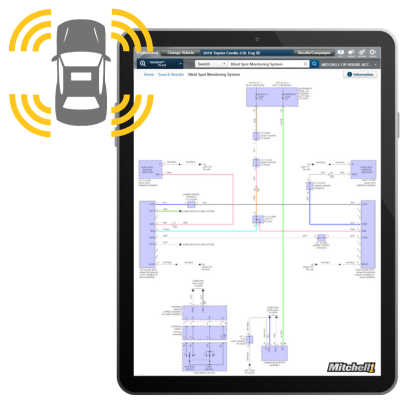
ProDemand delivers the most up-to-date OEM collision repair information to keep technicians ahead of the curve. Keeping up with the latest vehicle technology is far easier with industry-leading repair software, resulting in safe, fast, and more accurate repairs. Whether your shop is repairing an ignition system, transmission, or an ADAS camera or sensor, Mitchell 1 has your back with the industry’s latest and most thorough data.
The ProDemand repair software features everything your shop needs to diagnose, repair, replace, and calibrate ADAS systems and components. Your technicians can have on-demand access to the most current diagnostic procedures, precision calibration techniques, and every other aspect of ADAS repair — all with the click of a button. Simply enter a search term such as model, year, component, or other keywords into the proprietary search engine, 1Search Plus.
Technicians will find interactive wiring diagrams that make wire tracing and locating components easier for ADAS repair. They’ll discover OEM repair information combined with SureTrack real-world fixes from professionals nationwide for the most up-to-date and complete procedures. Most of all, your technicians will find data to improve their skill set and help them consistently complete repairs accurately and safely.
Partner with Mitchell 1 and discover how advanced technology contributes to safer and more accurate repairs — and more knowledgeable repair technicians. We invest in the latest technology to stay ahead of the curve, so your shop will always have the most comprehensive OEM repair information available.






